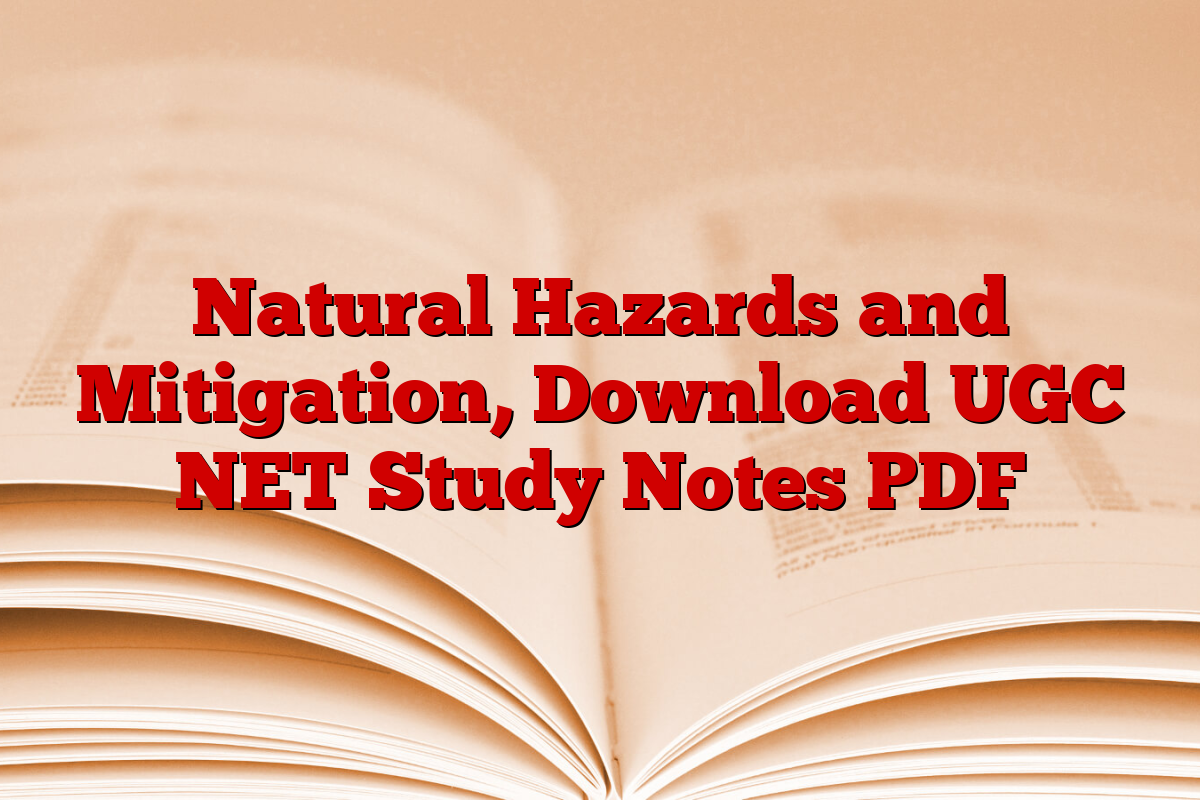Natural hazards are events or phenomena that occur naturally and have the potential to cause harm to people, property, or the environment. These hazards arise from natural processes and include earthquakes, floods, hurricanes, tornadoes, wildfires, volcanic eruptions, tsunamis, landslides, droughts, and more. Mitigation involves taking actions and implementing measures to reduce or reduce the effects of these natural hazards. In this discussion, we will explore detailed study notes on natural hazards and their mitigation strategies.
UGC NET Study Notes for Paper 1
what is natural hazard
Natural hazards are extreme events or processes that occur naturally and can cause harm, damage, or disruption to people, infrastructure, and the environment. They are beyond human control and may result from geological, meteorological or biological events. These threats take different forms and impacts, ranging from local incidents to large-scale disasters. Dealing with natural hazards requires a comprehensive approach including preparedness, response and mitigation strategies.
what is mitigation
Mitigation refers to actions and measures taken to reduce or reduce the impact of natural hazards. Mitigation strategies may include a number of activities such as risk assessment, land-use planning, structural measures, early warning systems, education and awareness programs, ecosystem management, insurance and financial strategies, and international cooperation. Mitigation includes actions and strategies aimed at reducing the negative impacts of natural hazards.
Types of Natural Hazards and Mitigation
Natural hazards are events or processes occurring in the natural environment that pose a threat to human life, property, and the environment. These include events like earthquakes, floods, storms, forest fires, landslides, volcanic eruptions and tsunamis. A variety of mitigation measures can be implemented to reduce the impact of natural hazards. Here are some common types of natural hazards and their corresponding mitigation approaches:
geophysical hazards
- These are linked to Earth’s internal processes and can cause serious damage. EarthquakeThe release of tectonic stress can result in ground shaking, ground breaking, and subsequent destruction of buildings and infrastructure.
- landslide This occurs when soil, rock or debris moves down slopes, endangering lives and blocking transportation routes.
- tsunami, Often triggered by undersea earthquakes or volcanic eruptions, huge sea waves can be generated that can devastate coastal areas.
- volcanic eruption Release ash, lava and toxic gases, threatening the nearby population and their livelihoods.
hydrological threats
- These are associated with water and can cause extensive damage.
- avalanche The rapid flow of snow, ice and debris downwind is posing a threat to communities in mountain areas.
- Floods This occurs when rivers or other sources of water overflow their banks, resulting in flooding of low-lying areas and damage to infrastructure and property.
climate threats
- These are linked to long-term weather patterns and climate conditions.
- bulk temperature, Whether extreme heat or cold, can stress human health, affect agriculture and disrupt ecosystems.
- Dry, Characterized by low rainfall over a long period of time, water scarcity can lead to crop failure and economic hardship.
- Forest fire, It often worsens due to dry conditions, spreads rapidly and threatens both natural habitats and human settlements.
weather hazards
- These include atmospheric phenomena that can result in hazardous conditions.
- hurricane, Involved Storm, storm, and whirlwind, Are powerful storms that can cause widespread destruction through high winds, heavy rainfall and storm surges.
- terrible storm, Such as thunderstorms and hailstorms, which can produce destructive winds, lightning and hailstorms, which can cause property damage and endanger lives.
biological threats
- These are related to living organisms and can have significant effects on human health.
- Disease outbreaks and epidemicsInfectious agents, such as bacteria, viruses or parasites, can spread rapidly within a population, resulting in disease, death and social disruption.
By understanding the nature of these threats and implementing proactive measures, societies can increase their resilience and reduce the devastating consequences they bring. Although it is impossible to eliminate risks completely, informed decision-making, adequate resources and collective efforts can significantly reduce their impact on human life and protect our communities.
Download Natural Hazards and Mitigation Study Notes PDF
sharing is Caring!
